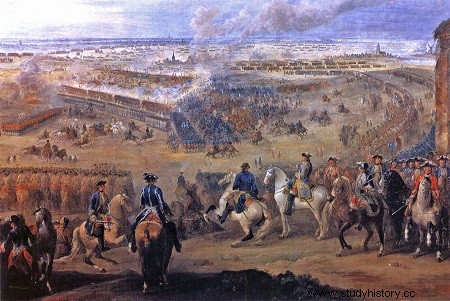
This is a gently hilly stretch (but this day -there wet, muddy), slightly sloping, which represents little more than a quadrilateral of one kilometer by two; it is in this relatively restricted space that everything will be played out.
Marshal de Saxe has deployed his men from Antoing to beyond the woods of Barry, while two important devices of The artillery were placed one behind Fontenoy, the other in front of this wood, on the French left. Highly equipped with heavy equipment, these positions will be intended to play the role of support points. However Saxe committed - he will recognize it at the end of the battle - an error which could have cost the victory to our troops:he neglected to fortify the 850 meters separating Fontenoy from the Barry wood, a breach into which the Allies rushed. ..
At the time, on May 10, Louis XV found himself withdrawn from the Bois de Barry, in the midst of an army happy and proud to know that he was at his side. The king, very playful, liked to recall that since the battle of Poitiers* (of 1356), no French sovereign had fought with his son and that, since Saint Louis, none had personally led an engagement of a such importance against the English.
On the morning of the 11th, very early, while Marshal de Saxe continued to give his final instructions, the King went to his command post at Notre-Dameau-Bois, surrounded, among others, by the Dauphin and Marshal de Noailles. *. Under the aegis of the Duke of Richelieu*, the protection of the King of France was ensured thanks to a bridgehead thrown over the Scheldt — in order to allow a possible retreat — and above all thanks to a detachment of elite troops specifically charged to ensure the safety of the king, the dauphin and their loved ones.
